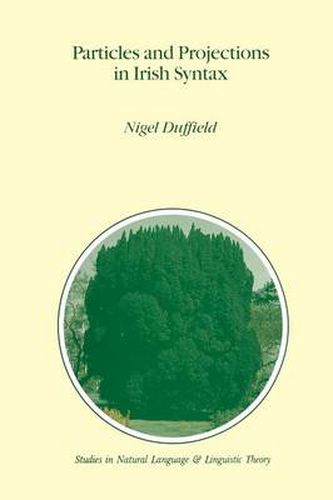Readings Newsletter
Become a Readings Member to make your shopping experience even easier.
Sign in or sign up for free!
You’re not far away from qualifying for FREE standard shipping within Australia
You’ve qualified for FREE standard shipping within Australia
The cart is loading…






This title is printed to order. This book may have been self-published. If so, we cannot guarantee the quality of the content. In the main most books will have gone through the editing process however some may not. We therefore suggest that you be aware of this before ordering this book. If in doubt check either the author or publisher’s details as we are unable to accept any returns unless they are faulty. Please contact us if you have any questions.
Chapter 5: Irish Noun Phrases …266 5. 0 Introduction 266 5. 0. 1 Irish Nominal Paradigms…269 5. 0. 2 Prepositional Phrases: Two Types of Mutation Context …273 5. 1 Construct State Nominals and DP Projections…282 5. 1. 1 Rightward Specifiers 286 5. 1. 2 Adjective Placement…288 5. 1. 3 Possessive Particles 305 5. 1. 4 Demonstrative Licensing and Interpretation…311 5. 1. 5 Head-movement and ICM Effects 315 5. 2 Summary 322 Appendix …323 References 342 Index of Names and Subjects 359 PREFACE This bookis based on my 1991 USCdissertation. Since thattime, there have been two major theoretical developments that bear directly on the analysesoriginallydevelopedin the dissertation. These aretheinceptionof the ‘Minimalist Program’ of Chomsky (1992, 1993), and the recent ‘Antisymmetry’ proposals presented in Kayne (1993). Taken in conjunction with the many criticisms and suggestions ofreviewers, these proposals have prompted significant revisions ofthe earlier work:. Every chapter has been substantially revised, the introductory chapter has been replaced, and Chapters 2, 3 and 5 offer completely new analyses of the originalmaterial. The book comprises a set of theoretical studies of aspects of Modern Irish syntax. I have tried to present a coherent and consistent treatmentof the Irishfacts; abookin which the particularsofIrish syntax- which are in many cases quiteeccentric from an Englishperspective- are shown to inform more general theoreticalissues. I also hope to have offered to the non-Celticist a reasonably complete overview of the major syntactic structures ofIrish, with some indication and analysisofthe more importantdialectdifferences.
$9.00 standard shipping within Australia
FREE standard shipping within Australia for orders over $100.00
Express & International shipping calculated at checkout
This title is printed to order. This book may have been self-published. If so, we cannot guarantee the quality of the content. In the main most books will have gone through the editing process however some may not. We therefore suggest that you be aware of this before ordering this book. If in doubt check either the author or publisher’s details as we are unable to accept any returns unless they are faulty. Please contact us if you have any questions.
Chapter 5: Irish Noun Phrases …266 5. 0 Introduction 266 5. 0. 1 Irish Nominal Paradigms…269 5. 0. 2 Prepositional Phrases: Two Types of Mutation Context …273 5. 1 Construct State Nominals and DP Projections…282 5. 1. 1 Rightward Specifiers 286 5. 1. 2 Adjective Placement…288 5. 1. 3 Possessive Particles 305 5. 1. 4 Demonstrative Licensing and Interpretation…311 5. 1. 5 Head-movement and ICM Effects 315 5. 2 Summary 322 Appendix …323 References 342 Index of Names and Subjects 359 PREFACE This bookis based on my 1991 USCdissertation. Since thattime, there have been two major theoretical developments that bear directly on the analysesoriginallydevelopedin the dissertation. These aretheinceptionof the ‘Minimalist Program’ of Chomsky (1992, 1993), and the recent ‘Antisymmetry’ proposals presented in Kayne (1993). Taken in conjunction with the many criticisms and suggestions ofreviewers, these proposals have prompted significant revisions ofthe earlier work:. Every chapter has been substantially revised, the introductory chapter has been replaced, and Chapters 2, 3 and 5 offer completely new analyses of the originalmaterial. The book comprises a set of theoretical studies of aspects of Modern Irish syntax. I have tried to present a coherent and consistent treatmentof the Irishfacts; abookin which the particularsofIrish syntax- which are in many cases quiteeccentric from an Englishperspective- are shown to inform more general theoreticalissues. I also hope to have offered to the non-Celticist a reasonably complete overview of the major syntactic structures ofIrish, with some indication and analysisofthe more importantdialectdifferences.